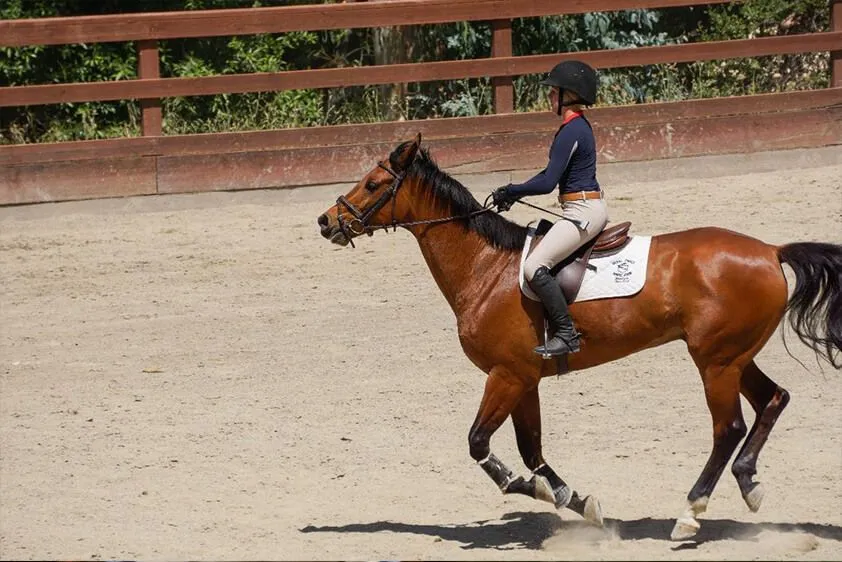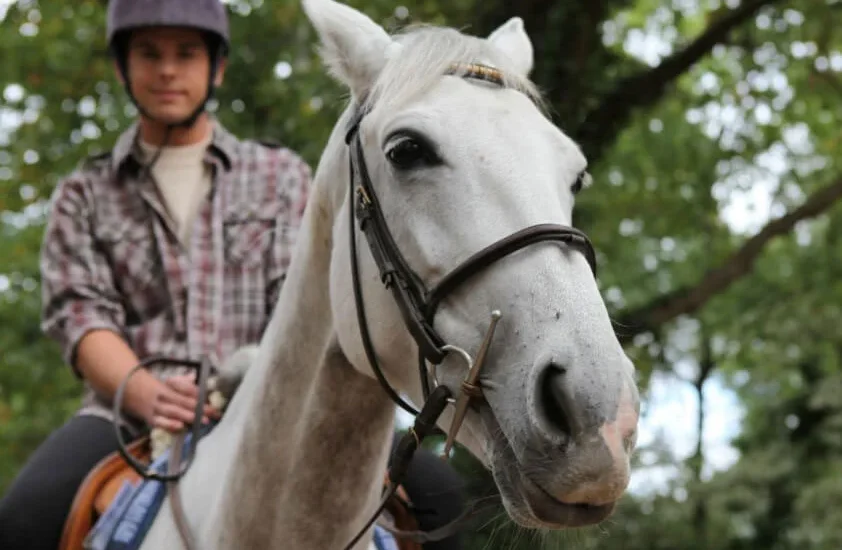Whether you are a longtime equestrian, have never ridden, or are hoping to get back in the saddle, here are some great Horseback Riding Safety “DO’s and DO NOTs” from a Physical Therapist.
DO: Always Wear a Helmet and Proper Gear
Horseback riding does come with some risk. Make sure you are always wearing a proper-fitting horse-riding helmet before you are sitting in the saddle. Even as an experienced rider, you never know what could happen. Wearing a helmet is incredibly important and could prevent serious injury or save your life.
Prepare for your ride by wearing the proper attire. Choose sturdy, closed-toed boots with a 1-2 inch heel. Loose-fitting (but still comfortable) shirts and long pants are recommended. Grab sunglasses on a sunny day, or bring a jacket and gloves in case of rain or chilly weather. When trail riding, comfortable clothing allows you to move easily and offers some protection against sticker bushes or fallen branches.

DO NOT: Attempt Skills You Are Not Ready For
Horseback riding is a LEARNED sport that includes some pretty neat tricks these athletes LEARN to do overtime! Spoiler Alert – They SHOULD NOT be attempted without proper training. These high-level skills can take a long time to learn, but if you are ready to dedicate your time and effort to this “arena” find a qualified teacher for training and instruction. Attempting jumps, high-speed barrels, or other stunts outside of your skill level is not safe for you or the horse!
DO: Always Be Alert
Paying attention to both your horse and your surroundings will help you steer clear of many dangerous situations. Horses can often spook, even when they are in familiar surroundings. Always be aware of the distance between your horse and other horses/animals. Make sure the terrain you are on is appropriate for horseback riding, that your horse is comfortable, and that (if needed) you are following the directions of a trained instructor or experienced rider.

DO NOT: Slouch
While you may not become a “horse whisperer” overnight, did you know the way you sit on a horse is an important way of communicating with them? Maintaining a good posture while horseback riding is best for yourself AND the horse. Balancing your body weight and staying in the correct position on the horse’s back shows them you are relaxed and stress-free.
When your horse is comfortable both physically and mentally, it is better able and more willing to perform your requests. Good posture while horseback riding helps develop strong abdominal muscles, and your strengthened core makes keeping good posture easier. Keep sitting up straight while horseback riding – it is a win-win!
DO: Get Checked Out if You Are Hurt or Injured
If you develop a sore back after riding (oww!), your horse accidentally steps on you (ouch!), or even if you get bucked off your horse (yikes!), get checked out by a medical professional. If physical therapy is needed, SportsCare Physical Therapists are happy to help you make a full recovery (and if desired), get you back in the saddle again!
For more information or to set up an evaluation, all SportsCare Physical Therapy locations can be reached by phone or you can schedule an appointment online.

